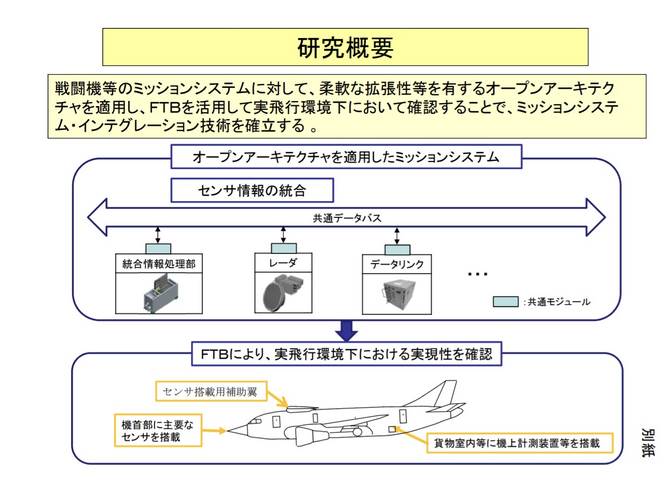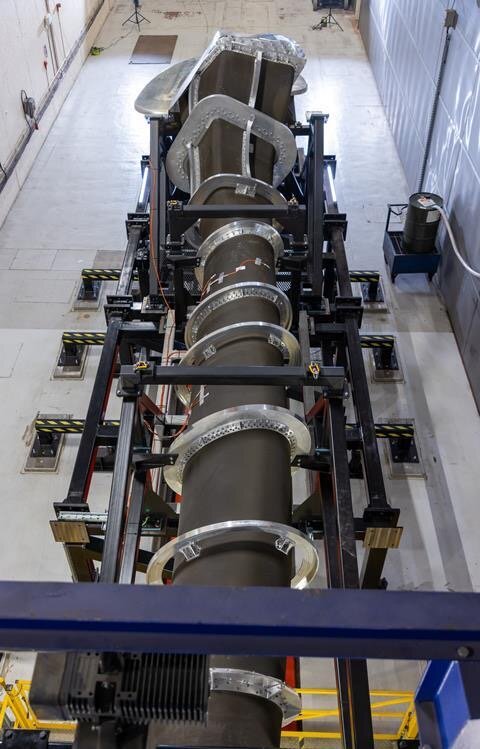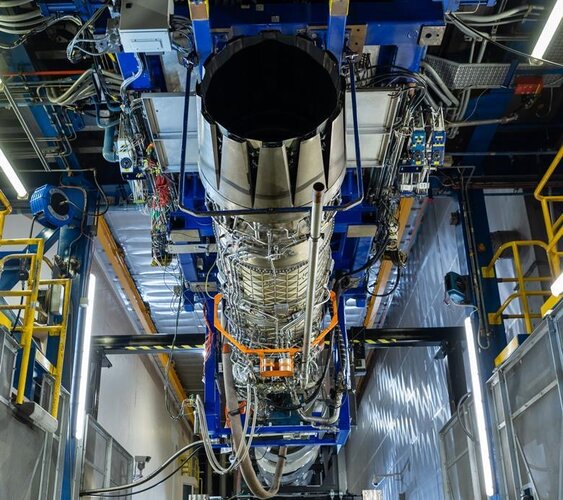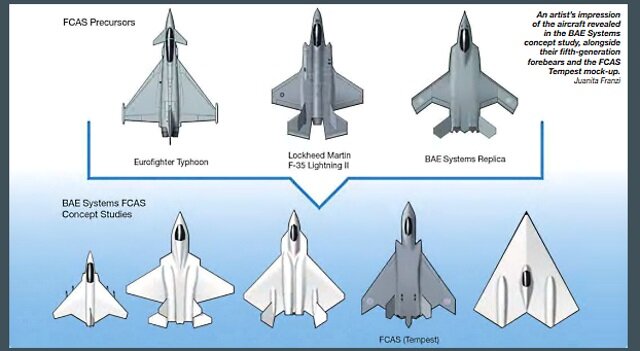- Joined
- 23 August 2011
- Messages
- 1,612
- Reaction score
- 4,777
Attachments
Last edited by a moderator:
I'm guessing GCAP will still use the name "Tempest" for the manned fighter component? Just a guessThe Ministry of Defence has awarded £650m to manufacturers working on its Tempest fighter jet, in the latest sign that the UK is pushing forward with the aim of producing the aircraft by 2035.
The companies who will receive the money are led by manufacturer BAE Systems, jet engine maker Rolls-Royce, and the UK arms of Italy’s Leonardo and European missile-maker MBDA.

Ministry of Defence awards £650m to firms working on Tempest fighter jet
BAE Systems and Rolls-Royce among those funded, with aim of producing new aircraft by 2035www.theguardian.com
This is "current artwork" rather than the "current design"Let's wait and see if the final design is going to be similar to this current design, or with minor changes along the way depending on what the computer simulations say.

Could that open the possibility for a KF-21 equivalent? This is taking into consideration the advanced (and likely classified) technology which likely can't be exported outside of the three partners due to cost and security concerns.It does, however, highlight the need for a second core manned platform for those potential customers who don't need or can't afford 'son of ADV'
That appears very unlikely given the costs (and simultaneous drain on resources and other likely distractions) associated with developing and producing another “export only” airframe in parallel with the “priority” airframe for the program partners.Could that open the possibility for a KF-21 equivalent? This is taking into consideration the advanced (and likely classified) technology which likely can't be exported outside of the three partners due to cost and security concerns.It does, however, highlight the need for a second core manned platform for those potential customers who don't need or can't afford 'son of ADV'
GCAP has already been stated to enter the export market, and those who will even be able to afford it likely won't be a security concern. As for a 2nd core manned platform that will be handled the F-35. All partners of GCAP are some of the biggest F-35 operators outside of the US and have each contributed to the F-35 program in a significant way. From the start GCAP was made to directly integrate with the F-35 in a Hi-Lo fashion. If a country either can't afford or doesn't have the clearance to buy an F-35 as a secondary system then there is no way they will get their hands on GCAP.Could that open the possibility for a KF-21 equivalent? This is taking into consideration the advanced (and likely classified) technology which likely can't be exported outside of the three partners due to cost and security concerns.It does, however, highlight the need for a second core manned platform for those potential customers who don't need or can't afford 'son of ADV'
The KF-21 technically wont reach it's 5th gen status until around the time GCAP is meant to enter service ~mid 2030s.The KF-21 is a fifth generation fighter
If they were to create an "export fighter" they'll rather create a variant with dumbed down avionics rather than designing an all-new jet. That is of course should they think that such is necessary, which as Kota said, was alluded to be not the case.Could that open the possibility for a KF-21 equivalent? This is taking into consideration the advanced (and likely classified) technology which likely can't be exported outside of the three partners due to cost and security concerns.
No GCAP is still going to be absolutely massive. This is just a tech demonstrator to test sub systems and not a prototype airframe. Think of it as X-2 is to F-X as unnamed demonstrator is to GCAP. It seems like engine testing will be handled by Japan too so the UK will be studying other things and just needs some engines to get the airframe into the sky hence EJ2000s.if its two EJ2000, i wonder if the built aircraft will be smaller than I thought.
more KF-21 size than Kaan or F-22 sized
Those pictures are very interesting, thanks for sharing the article.https://asia.nikkei.com/Business/Ae...continueFlag=bd0f645f0dbfd07c1fcd2e24e5bd302a
Nikkei:
“The (GCAP) demonstrator, when it is completed in 2027, will be fitted with two Eurojet EJ200 engines, a model used in the Eurofighter Typhoon.”
https://asia.nikkei.com/Business/Ae...continueFlag=bd0f645f0dbfd07c1fcd2e24e5bd302a
Nikkei:
“The (GCAP) demonstrator, when it is completed in 2027, will be fitted with two Eurojet EJ200 engines, a model used in the Eurofighter Typhoon.”
If I'm not mistaken, when testing crew ejection systems it's usually required to test the seat into a frontal section at least vaguely aerodynamically representative of the production aircraft.



Those pictures are very interesting, thanks for sharing the article.https://asia.nikkei.com/Business/Ae...continueFlag=bd0f645f0dbfd07c1fcd2e24e5bd302a
Nikkei:
“The (GCAP) demonstrator, when it is completed in 2027, will be fitted with two Eurojet EJ200 engines, a model used in the Eurofighter Typhoon.”
If I'm not mistaken, when testing crew ejection systems it's usually required to test the seat into a frontal section at least vaguely aerodynamically representative of the production aircraft.
That sled's shape and canopy don't even remotely look like any of the released images of the Tempest so far.


10 metre ducts, 4 metre long EJ-200 engine....thats looking like a close to 20 metre long airframe. That's F-15/F-22 size.if its two EJ2000, i wonder if the built aircraft will be smaller than I thought.
more KF-21 size than Kaan or F-22 sized
Man...there is a lot of hills one can choose to die on, but you're picking one that doesn't even make any sense.If you think 24DMU was a Japanese design in the first place, of course... and not developed from the BAE 'concept spread'
View attachment 701500

Do you mean someone could park a ship on the 12 mile limit off Southport and collect the signature?d) flying a full-up LO aircraft from Warton would be a bit of a gift to the enemy.
12 miles off Hull is only 150 miles!Do you mean someone could park a ship on the 12 mile limit off Southport and collect the signature?d) flying a full-up LO aircraft from Warton would be a bit of a gift to the enemy.
Or is Blackpool a wretched hive of scum and villainy?....Actually no need to confirm that bit...
This is just so out of left field that wouldn't even need to be addressed. Tempest 2018 was derived by one of the concepts BAE evaluated, that doesn't necessarily mean "one of those four" in the drawing. It surely underwent several different iterations before the 2018 configuration was picked up.There was no direct link between any of the concept spread designs illustrated (they were simply four examples of the many dozens being assessed and analysed) and the 2018 Tempest unveiled at Farnborough
Alas, English is not my mother tongue, but I suspect this is the complete opposite of what you implied by writing:I see some similarity between the third concept and 24DMU. I did not say that 24DMU was a British Aerospace or BAE Systems design, just pointed out the apparent similarity.
Only one of those statements can be true at any one time, make up your mind, please.If you think 24DMU was a Japanese design in the first place, of course... and not developed from the BAE 'concept spread'
Canopy in Concept 5 is a hell of a lot more aft than on the sled model and also has a completely different shape of the glazing.You don't see a resemblance between Concept 5 and the ejection seat test sled. Fair enough. I do. And I've actually seen the thing, in the flesh, yesterday.
